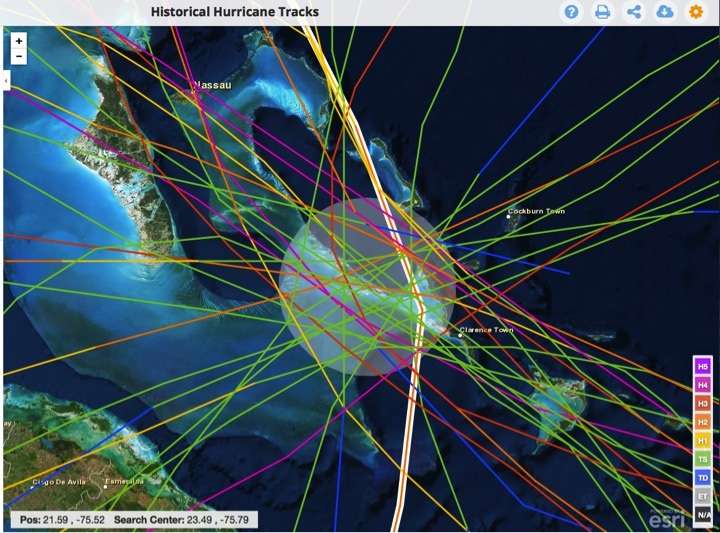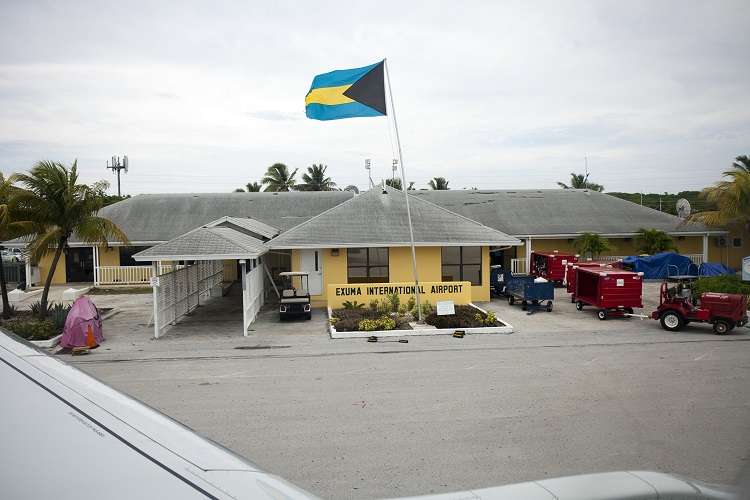Hurricane histories and carbon mysteries

A group of nine PhD students from the Department of Earth and Environmental Sciences at Columbia University has just arrived in Exuma, The Bahamas, for a week-long field trip.
The Bahamas might be a vacation destination for most people. But for us, they represent an excellent site to study several different questions about past, present and future climates. We will try to answer two main questions on this trip: First, can we reconstruct past hurricane strikes from the geologic record in the Bahamas? Second, islands in the middle of the ocean typically form near areas of strong volcanic activity. Why do the Bahamas—an island chain a thousand miles away from the nearest volcano—even exist?
The Bahamas are constantly under threat from hurricane landfalls. The National Oceanic and Atmospheric Administration (NOAA) has documented over 30 "tropical systems" (storms with wind speeds of 40 miles per hour or greater) coming within 50 miles of Great Exuma Island since the late 19th century.
Many of the storms that traversed this region of the Bahamas continued onward to make landfall in the United States—both Hurricane Irene in 2011 and Hurricane Sandy in 2012 passed over Exuma before their eventual destructive landfalls in the northeastern U.S. We aim to use the geologic record of Exuma to infer past hurricane landfalls that occurred prior to the 19th century. With this information, we can better understand the relationship between hurricane activity and climate, which will help to improve future projections of hurricane activity.

The processes that originally created the Bahamas over 100 million years ago, and continue to operate today, are an area of open scientific debate. By all rights, the Bahamas shouldn't exist; how and why the islands formed is not yet explained. Maybe surprisingly, the possible explanation for how the islands formed is related to climate. The extensive sediments of the Bahama Banks are comprised nearly exclusively of the mineral calcium carbonate. These calcium carbonate sediments represent a large reservoir of carbon locked away from the atmosphere. Without these sediments, not only would the Bahamas not exist, but concentrations of the greenhouse gas carbon dioxide would be much higher than at present. Over the course of this trip, we will investigate the complex, micro- and macro-scale processes that create the calcium carbonate sediments of the Bahamas.
Thanks to funding from the Extreme Weather and Climate Initiative, Lamont supporter Frank Gumper and other sources, we'll spend the next week looking for insights into these two questions. And if we're lucky, we might even get a few brief moments of downtime in the sun.

Provided by Columbia University



















